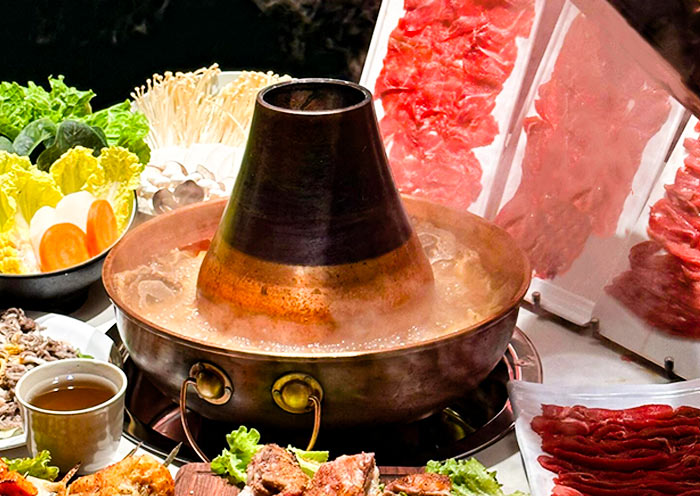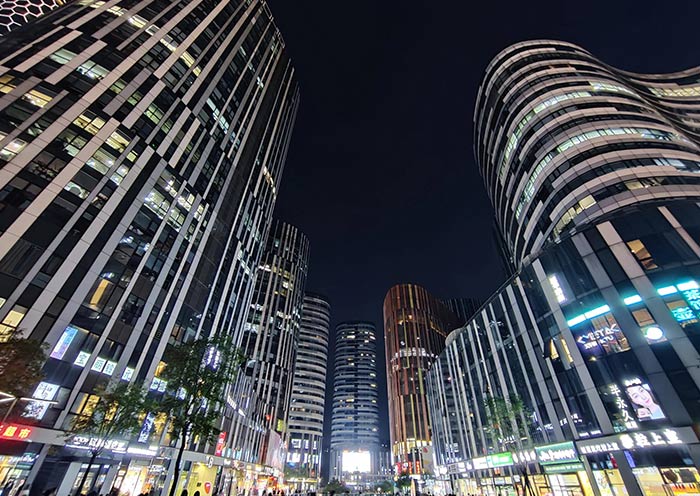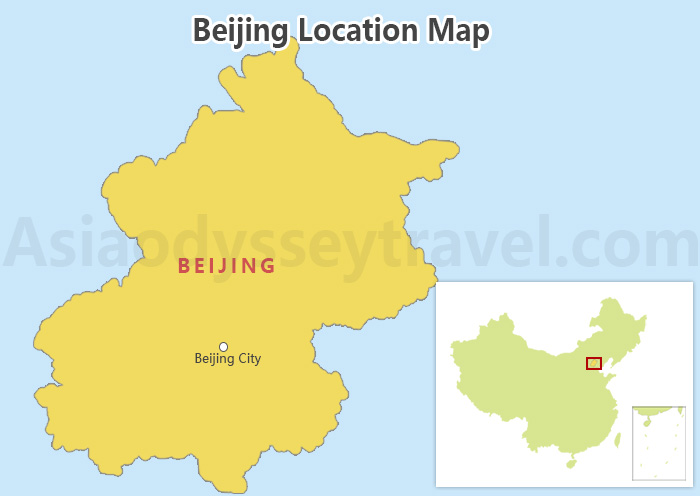What to See in Forbidden City
Step through the grand entrance, and the Forbidden City, in all its imperial splendor, will greet you. Imagine living the life of a Chinese emperor, surrounded by opulence and power. This vast complex, with its over 9,900 rooms, was meticulously divided into the Outer Court for governance and the Inner Court for the emperor's personal life.
As you wander through the palace, pay attention to its architectural marvels. The symmetrical layout along the central axis is a testament to the principles of feng shui, while the vibrant red and gold colors exude imperial grandeur. The intricate wooden joints, a marvel of ancient Chinese carpentry, hold the palace together.
The Outer Court: Where Emperors Ruled
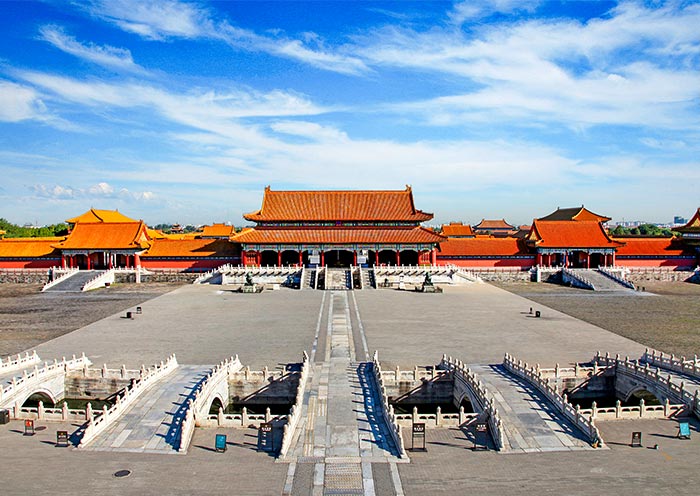

The Outer Court of the Forbidden City is where the emperor handled official business and hosted grand ceremonies. Three main halls dominate this area:
The Hall of Supreme Harmony (太和殿): This is the heart of the Forbidden City. As the largest wooden structure in China, it was the stage for the emperor's most important rituals, like coronations. The emperor's throne sits here, guarded by majestic stone lions.
The Hall of Complete Harmony (中和殿): The emperor would pause here to gather his thoughts before grand ceremonies. This hall was designed to ensure he was calm and ready for his duties.
The Hall of Preserving Harmony (保和殿): This hall was often used for imperial banquets and, historically, for the final exams of the civil service examination.
You'll cross five bridges to enter this area. The middle was reserved for the emperor, while the others were for officials. Beneath these bridges flows the Golden Water River.
Beyond the Three Great Halls, there's the Wenhua Hall, now a library housing a vast collection of ancient books, and the Wuying Hall, primarily used for art exhibitions.
The Inner Court:

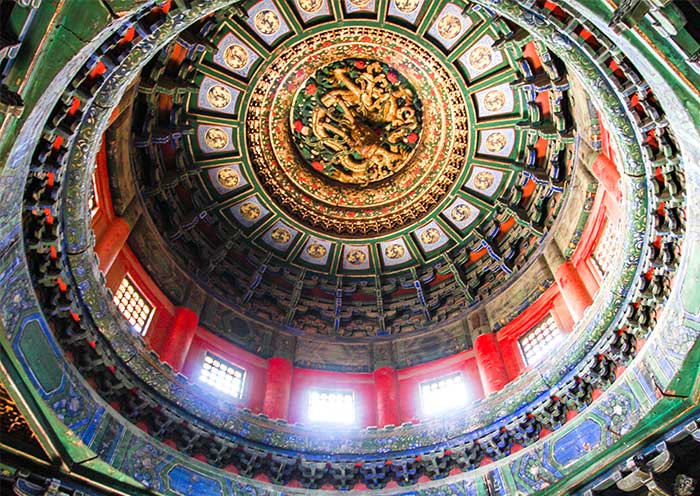
The Inner Court of the Forbidden City was the emperor's and his family's private domain. This area was off-limits to most people, and only the most trusted officials and servants were allowed to enter.
The Palace of Heavenly Purity (乾清宫): The largest palace within the Inner Court, which served as the sleeping and administrative quarters for 16 Ming and Qing emperors, is distinguished by the "正大光明" plaque inside it. Hidden behind this plaque is a secret edict for appointing the next emperor. The rear of the main hall houses the emperor's bed, elaborately carved and decorated. Next to this palace was the Hall of Mental Cultivation, where, starting with Emperor Yongzheng, emperors managed state affairs and resided.
The Hall of Union (交泰殿): This hall housed the imperial seals and was also the venue for the Empress's birthday celebrations.
The Palace of Earthly Tranquility (坤宁宫): Serving as the residence of the Empress, this palace showcases the living space of the Empress along with various ceremonial items used by the royal family.
The Six Eastern and Six Western Palaces (东西六宫): These palaces were the residences of the emperor's consorts and princes. Located on either side of the Palace of Heavenly Purity, they feature private rooms, courtyards, and gardens, offering a more intimate glimpse into the lives of those within the emperor's inner circle.
The Imperial Garden
The Imperial Garden is located in the northernmost part of the Forbidden City and served as a private retreat for the emperor and his family.
This meticulously designed garden exemplifies the best of traditional Chinese landscape architecture. Here, you'll find a harmonious blend of natural elements, including rockeries, ponds, and a variety of plant life. The garden's pavilions and corridors, connected by delicate lattice windows, offer visitors a glimpse into the refined tastes of the imperial family.
The Collections and Exhibitions of the Forbidden City
The Forbidden City, a sprawling palace complex with over 500 years of history, is not only an architectural marvel but also a treasure trove of Chinese cultural heritage. Among its most famous collections are the Treasure Gallery and the Clock Gallery.
The Treasure Gallery, located in the northeastern sector of the Forbidden City, houses some of the most exquisite items once owned by the imperial family. This includes everything from jade sculptures and gold ornaments to the intricately designed personal belongings of the emperors and their consorts.
The Clock Gallery, on the other hand, features a fascinating array of timekeeping devices. This collection includes elaborate European and Chinese timepieces, some of which were gifts from foreign dignitaries.
You'll also find some of the most treasured art pieces of China in the Forbidden City, including the renowned Along the River During Qingming Festival and A Distant View of a Mountain Village. The Complete Works of the Four Treasuries, a monumental collection of ancient Chinese literature, is another highlight of the museum.
Recommended Visiting Routes of the Forbidden City: From 2 Hours to 1 Day


The Forbidden City in Beijing, with its vast array of palaces, gardens, and art galleries, offers a deep dive into the splendor of imperial China. Whether you have a few hours or a full day to explore, there's a route that will suit your interests and schedule.
Route 1: The Classic Imperial Journey (2-3 h)
For first-time visitors to the Forbidden City with limited time, a tour along the central axis is the ideal choice. This route allows you to swiftly understand the grandeur of the imperial complex. Start at the imposing Meridian Gate and move directly into the Outer Court, where you will visit the Hall of Supreme Harmony, the Hall of Central Harmony, and the Hall of Preserving Harmony.
Continue into the Inner Court with stops at the Palace of Heavenly Purity, the Hall of Union, and the Palace of Earthly Tranquility. Conclude your visit at the tranquil Imperial Garden located at the northern end, offering a serene finale to your imperial exploration.
Route 2: Culture and History (Half-day)
For those keen on delving deeper into ancient Chinese culture and history, this route builds on the central axis tour by adding visits to the Treasure Gallery and the Clock Gallery, where you can for a closer look at the timepieces and valuables of the royal collection.
A possible route: Meridian Gate - Hall of Supreme Harmony - Hall of Complete Harmony - Clock and Watch Gallery - Treasure Gallery - Palace of Heavenly Purity - Palace of Tranquil Longevity - Imperial Garden.
Route 3: The Comprehensive Forbidden City Tour (Full Day)
Embark on a thorough exploration of the Forbidden City and the life of its royals by visiting all accessible areas of the complex.
Start your journey at the Meridian Gate, then visit the Wenyuan Pavilion before exploring the three great halls of the Outer Court. Continue to the Ci Ning Palace and the Six Western Palaces, which offer a glimpse into the more private lives of the emperors's mother and concubines.
After a stroll through the Imperial Garden, visit the Palace of Earthly Tranquility and the Palace of Heavenly Purity. Your route then leads you through the Six Eastern Palaces followed by the Clock Gallery and the Treasure Gallery, ensuring a comprehensive understanding of both the public and private facets of imperial life.
Best Spots for Panoramic Views and Photography

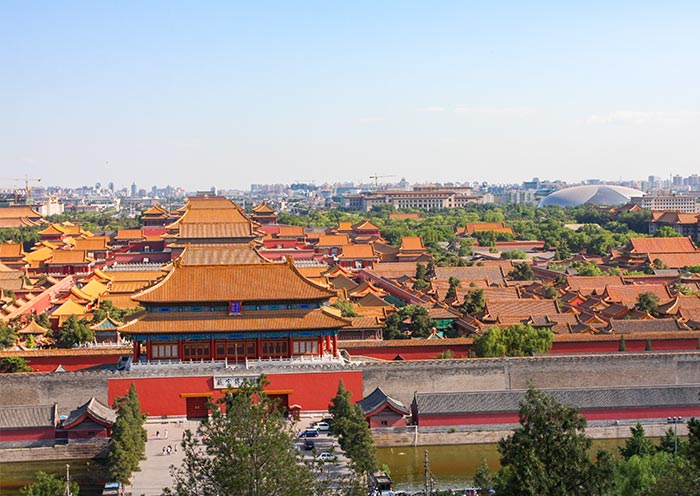
Jingshan Park (Wanchun Pavilion): Located north of the Forbidden City, Jingshan Park is a royal garden on Beijing's central axis. Wanchun Pavilion, the highest point of the park, offers panoramic views of the entire Forbidden City. Mornings or evenings, especially during sunrise and sunset, provide the softest light and the most beautiful scenery.
Clock and Bell Towers: For a wider perspective, head to the Clock and Bell Towers outside the Forbidden City. These iconic towers offer stunning views of the entire palace complex.
Corner Towers: For a more intimate experience, explore the corner towers of the Forbidden City. The northeast and northwest corners provide unique perspectives of the palace walls and moat.
Dining and Shopping in Forbidden City
Inside the Forbidden City, you'll find a couple of quaint cafes located near the garden areas, where you can enjoy simple Chinese tea and snacks.
As for shopping, the Forbidden City is home to several souvenir shops that offer a wide range of items from postcards and books to more exquisite artifacts such as silk scarves, replicas of imperial jewelry, and handcrafted artworks.
Dining Options:
The Palace Museum Restaurant: Located near the Treasure Gallery and the Clock Gallery, this spot offers predominantly Chinese fast food. It's perfect for grabbing a quick bite without leaving the historical site, allowing you more time to explore the vast museum complex.
Ice Well Restaurant (Bing Jiao Restaurant): Situated near the Ci Ning Palace Garden, this restaurant offers a mix of Chinese set meals along with Western fast food options like coffee and sandwiches. It's a great spot to relax and refuel in a setting that overlooks one of the quieter parts of the Forbidden City.
Kun Ning East Courtyard Tea House: On the east side of the Palace of Earthly Tranquility, this charming tea house offers a pleasant afternoon tea experience. Nearby, you'll also find a restaurant specializing in Western-style light meals, including sandwiches, grilled sausages, and chicken wings. It's a perfect place to unwind after walking through the imperial grounds.
Shopping:
The shops around the museum provide plenty of options to find the perfect memento of your visit. Specialties include silk products, replicas of imperial artifacts, and other traditional Chinese items that reflect the rich heritage of the palace.
How to Get to Forbidden City and Entry Forbidden City
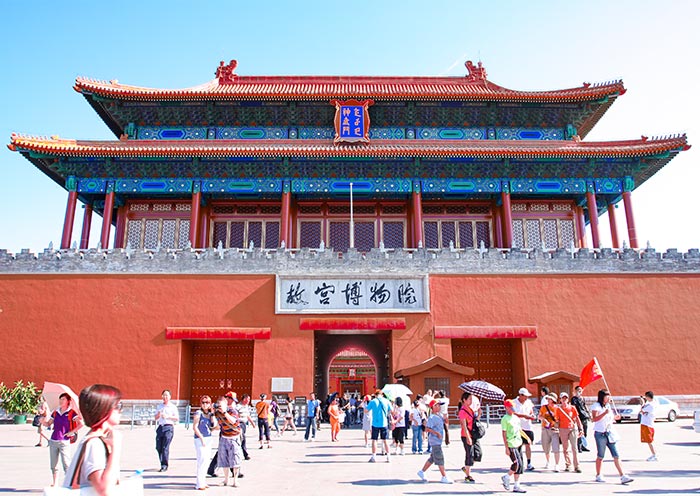

The Forbidden City is located in the center of Beijing, just north of Tiananmen Square. You can easily get there by bus, subway, or taxi.
Adress: No.4 Jingshanqian Street, Dongcheng District, Beijing, China
Subway: Take Line 1 to Tiananmen East or Tiananmen West station, or Line 2 to Qianmen Station. From there, it's just a short walk through the iconic Tiananmen Square to the main entrance of the Forbidden City, the Meridian Gate (Wumen).
Bus: For those who prefer to travel by bus, numerous routes stop near Tiananmen Square, including lines 1, 2, 52, 82, and 120.
Taxi: Taxis and rideshares are also viable options, dropping you off at the east or west gate.
An important tip for visitors: You will enter the Forbidden City through the Meridian Gate (Wumen), so make this gate your ultimate destination. This means if you want to avoid starting your day with the lines at Tiananmen Square, you can skip it initially and head straight to the Meridian Gate to start your tour. You can then visit Tiananmen Square later in the afternoon.
Best Time to Visit Forbidden City in Beijing


The Forbidden City in Beijing attracts visitors from around the world all year round. However, spring (April and May) and autumn (September and October) are widely considered the best times to visit. During these months, Beijing boasts mild weather with comfortable temperatures and minimal rainfall, making it ideal for wandering the expansive grounds of the palace.
In spring, the blooming flowers add vibrant colors to the ancient red walls and golden roofs. Conversely, in autumn, the city is blanketed with golden and red leaves, creating a picturesque environment that is perfect for photography enthusiasts.
The peak season for visiting the Forbidden City runs from April to October, while the off-peak season is from November to March. It's advisable to avoid Chinese public holidays, weekends, and the busy Golden Weeks in May and October when visitor numbers are at their highest.
Tips to Avoid Crowds:
- Try to arrive before 8:30 AM or after 2:00 PM.
- Expect more tour groups along the central axis.
- Avoid bringing large bags to reduce waiting times and enter the Forbidden City earlier.
Forbidden City Opening Hours and Ticket Reservation
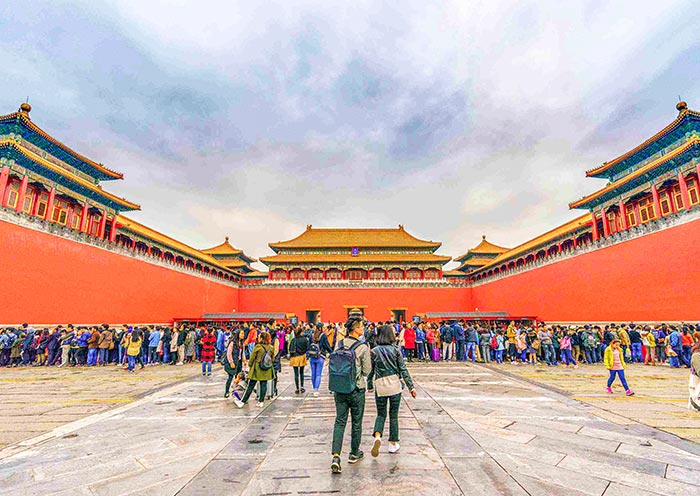

The Forbidden City, also known as the Palace Museum, operates from Tuesday to Sunday every week. The museum is closed on Mondays, except when Monday falls on a Chinese national holiday. The opening hours vary slightly by season:
April to October: 8:30 AM to 5:00 PM (last entry at 4:10 PM).
November to March: 8:30 AM to 4:30 PM (last entry at 3:40 PM).
Forbidden City Tickets
| Duration | Entry Fee (RMB) |
|---|---|
| 01. April - 31. October | 60 RMB/person |
| 01. November - 31. March | 40 RMB/person |
| Treasure Hall | 10 RMB/person |
| Clook Museum | 10 RMB/person |
To visit the Forbidden City, you can book your tickets in advance through their official website or WeChat mini program. If you're feeling spontaneous, you can also purchase tickets at the ticket booth on the day of your visit.
Forbidden City: Guided or DIY?
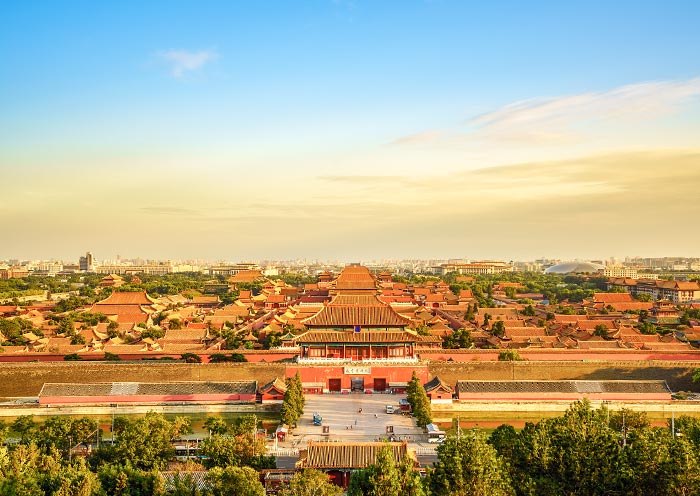

While a self-guided tour of the Forbidden City offers great flexibility, allowing you to explore this palace full of imperial stories and historical ambiance at your own pace, expert-guided services can provide a much deeper understanding and enriching experience. Expert guides not only give detailed explanations of the Forbidden City's historical background but also share lesser-known anecdotes and interesting facts that make your visit more engaging.
By choosing AOT Travel Services, you'll benefit from our professional guided tours that help you grasp the cultural and historical essence of the Forbidden City. AOT's team of guides knows every corner of the palace and can tailor your itinerary based on your interests and needs. Whether it's uncovering the secrets of history or pointing out easily overlooked details, AOT's experts ensure that your trip to the Forbidden City is both comprehensive and memorable.
Useful Travel Tips for Visiting the Forbidden City
Visiting the Forbidden City in Beijing is like stepping back in time to explore the epicenter of ancient Chinese imperial power. This magnificent palace complex, with its history spanning over 500 years, is a must-see for any traveler. To make your visit as enjoyable and hassle-free as possible, here are some essential travel tips:
- Buy Tickets in Advance: To avoid long lines, it's wise to purchase your tickets online before your visit. The Forbidden City limits the number of visitors per day, so booking ahead ensures you won't be turned away at the gate.
- Plan Your Arrival: The Forbidden City is massive, and exploring it can take several hours. Arrive early to beat the crowds and the heat, especially during the busy summer months. The main entrance, the Meridian Gate (Wumen), opens at 8:30 AM.
- Dress Comfortably: Be prepared for a lot of walking. Wear comfortable shoes and suitable clothing for the weather. Beijing can get quite hot in the summer and bitterly cold in the winter, so dress accordingly.
- Follow the Route: The Forbidden City is designed in a straight line from south to north. Most visitors start at the south entrance and work their way to the north exit. This route will help you cover all major highlights, including the Hall of Supreme Harmony, the Palace of Heavenly Purity, and the Imperial Garden.
- Take a Guide or Audio Guide: While exploring on your own is perfectly fine, hiring a guide or renting an audio guide can enrich your experience. They provide context and detail about the complex history and significance of what you're seeing.
- Respect the Site: Remember, the Forbidden City is not just a tourist attraction but a culturally significant site. Respect the rules, don't touch the artifacts, and avoid loud conversations.
How to Plan a Beijing Forbidden City Tour?
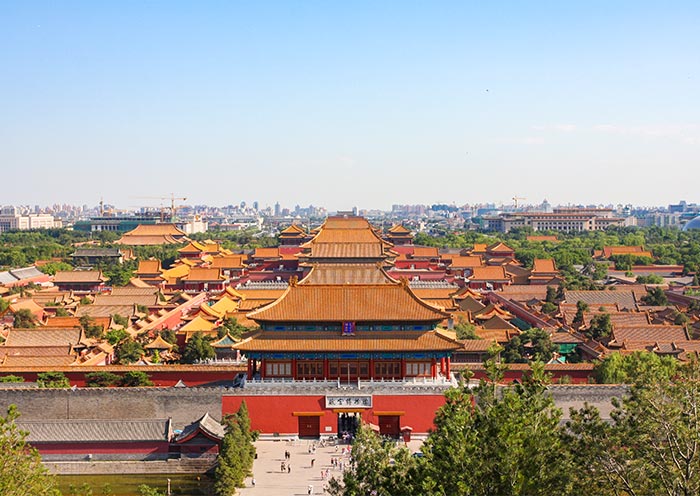

Exploring the rich history of Beijing and stunning architecture typically takes about 2-5 days, with a visit to the iconic Forbidden City usually taking up half to a full day. Extend your itinerary to include other Beijing highlights such as the Great Wall, the Temple of Heaven, and the Summer Palace to make the most of your stay in the capital of China.
Day 1: Arrival in Beijing
Day 2: Beijing City Tour. Start your day early with a visit to Tiananmen Square, one of the world's largest public squares, packed with history and culture. From there, enter the majestic Forbidden City, a palatial complex full of ancient treasures and stories. After exploring the imperial residences and gardens, head to the Summer Palace in the afternoon to enjoy its beautiful gardens, serene lake, and grand pavilions.
Day 3: Beijing Great Wall Tour. Dedicate your third day to visiting the Mutianyu section of the Great Wall. This less crowded section of the Wall offers breathtaking views and a chance to walk along one of the world's most famous historical landmarks. On your way back to the city, stop by the Olympic Park to see the Bird's Nest and Water Cube, two architectural marvels from the 2008 Beijing Olympics.
Day 4: Departure from Beijing
Travel to Beijing With Asia Odyssey Travel (AOT)
Experience the best of Beijing with Asia Odyssey Travel (AOT). As local experts, we've been crafting unforgettable journeys through the city for years. From the Forbidden City's grandeur to the hutongs' vibrant energy, we'll create a personalized itinerary that captures your interests.
Explore Beijing like a local with our comprehensive travel guide:
Beijing Hutongs, How to Visit Forbidden City
Beijing at Night, Beijing Food
Where to Stay in Beijing, How to Plan a Trip to Beijing
Useful Guide for Great Wall of China:
How to Get to the Great Wall of China, Great Wall of China Facts
Mutianyu Great Wall, Jinshanling Great Wall, Simatai Great Wall, Jiankou Great Wall
Most Popular Beijing Tour Packages:
Beijing Tours, Beijing Day Tours, Beijing Group Tours, Beijing Private Tours
Beijing Great Wall Tours, China Great Wall Tours, Beijing Layover Tours
Let Asia Odyssey Tours be your guide to Beijing. Contact us today to start planning your dream vacation.
